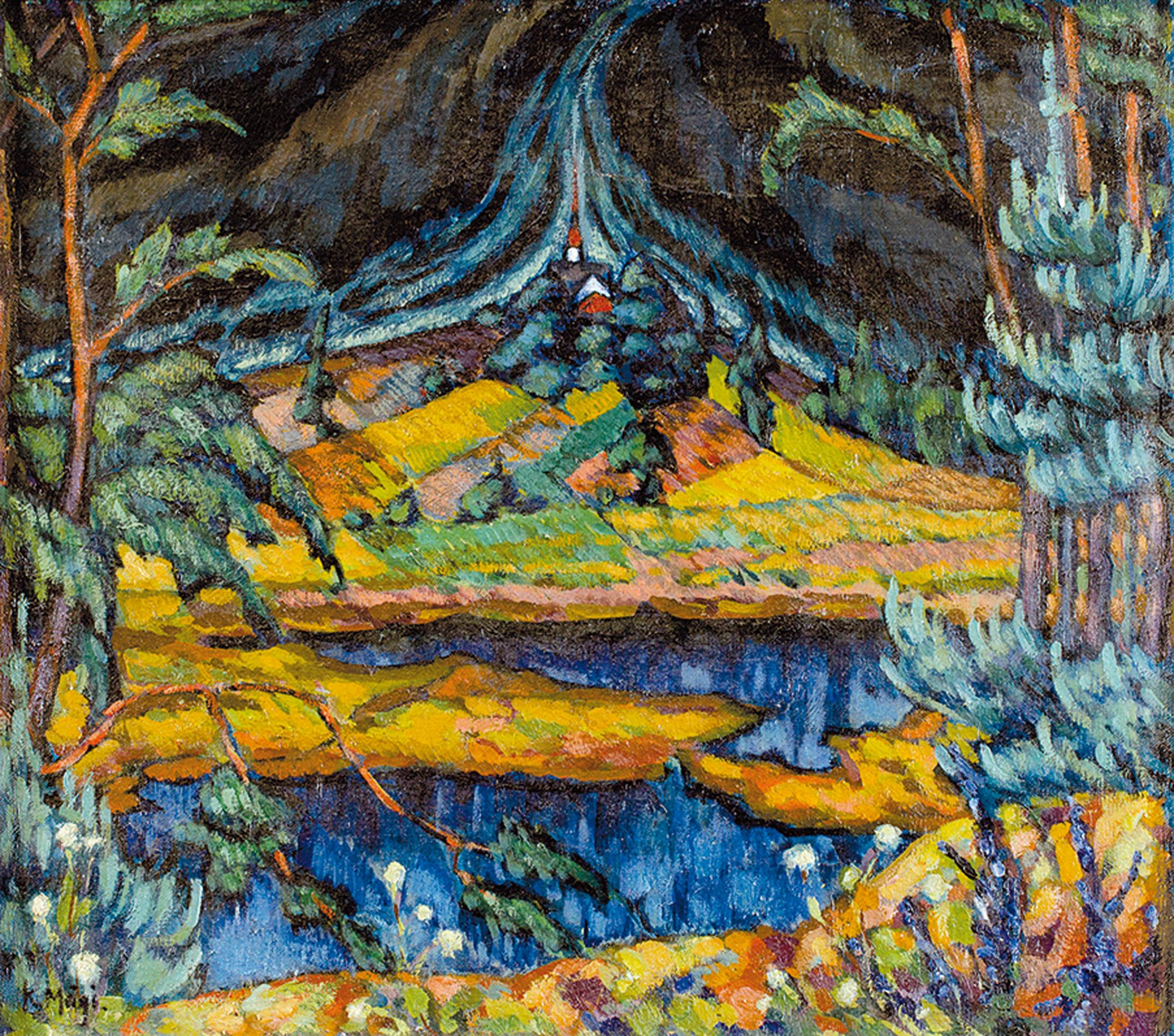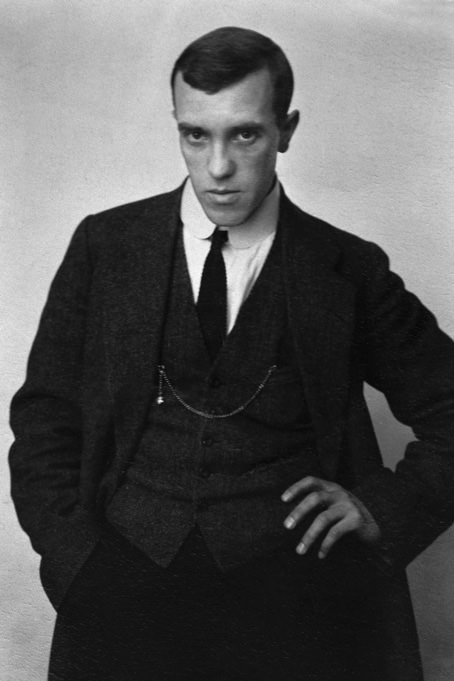

The reproduction of these works without the express written consent of the owner of the works is prohibited.
DownloadOtepää Landscape
Painted on one of Konrad Mägi’s summer outings to Lake Pühajärv, this is one of his most visionary works. What we see in the sky on the painting cannot be reduced to any concrete meteorological phenomenon, as it is the product of the artist’s imagination, which despite being seemingly impulsive is actually carefully planned – it has been revealed that underneath the layers of paint, the vectors reaching skyward had originally started from a somewhat lower position.
This work can also be placed in the context of two Christian compositions painted in the same period: Kolgata (1921) and Pietà (1919, both now lost). Mägi chose the Crucifixion and Lamentation as the theme for these paintings. More broadly put, they both have in common the motifs of suffering, death, resurrection and ascension.
If we place Otepää Landscape with its trajectories of ascension next to the two giant compositions, we can see them as a mini-cycle. He proceeds from a Christian as well as pantheistic interpretation, in both cases a tie between the earthly and the celestial. But while Kolgata and Pietà view the ascension through the humanist perspective, placing the myth of human suffering, the principle of sin and redemption at the centre, then Otepää Landscape can be considered posthumanist. Ascension here is not related to humans but to a non-human plane. Nature and natural forces seek connection with the sky and the energy roiling there, which in some sense is the finale to Mägi’s treatment of landscape painting to this point, where he constantly sought to connect earth and sky. Mägi used very disparate means for doing so: reflections of the sky in the limpid lakelets, the fact that the horizon has been lowered to make more room for the clouds, the sun is not depicted as a discrete object but integrated to the changes taking place in the landscape.
Using these strategies, Mägi often proceeds from a striving for sublimity and Otepää Landscape, too, seeks a cathartic experience. The darkened sky leaves no doubt that Mägi sees this scene as apocalyptic, not lyrical, but epic destruction is for him just as cathartic as the experience of Christ’s ascension.
The reproduction of these works without the express written consent of the owner of the works is prohibited.

